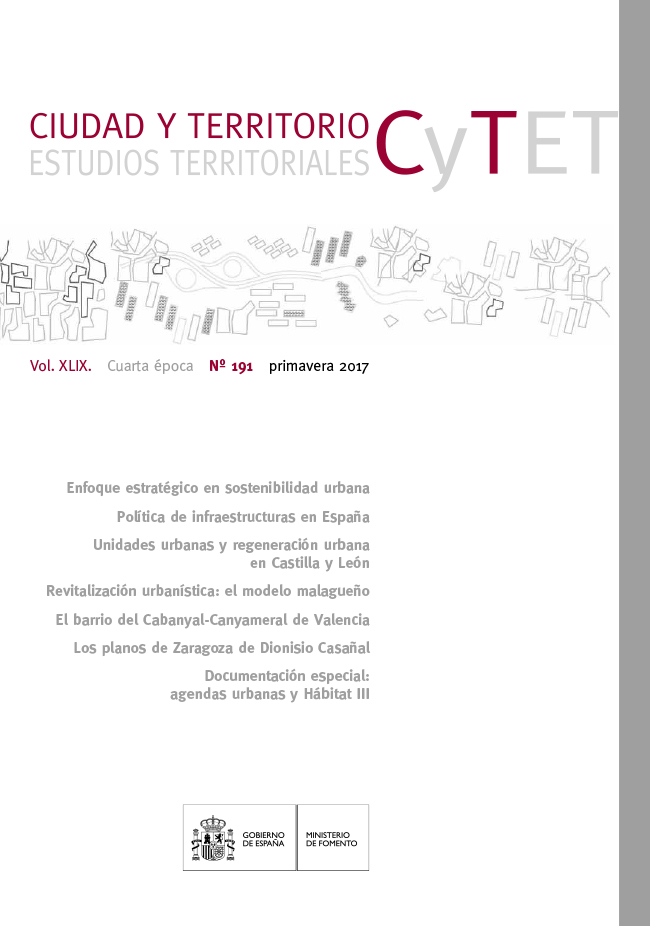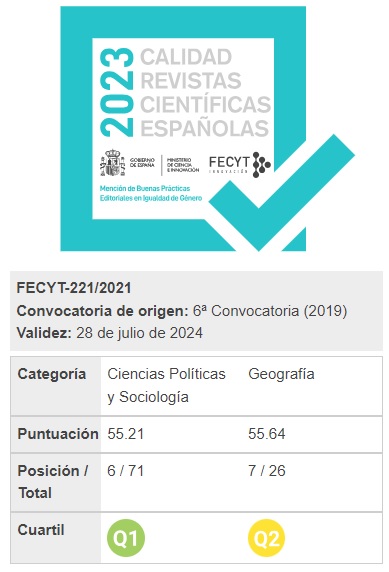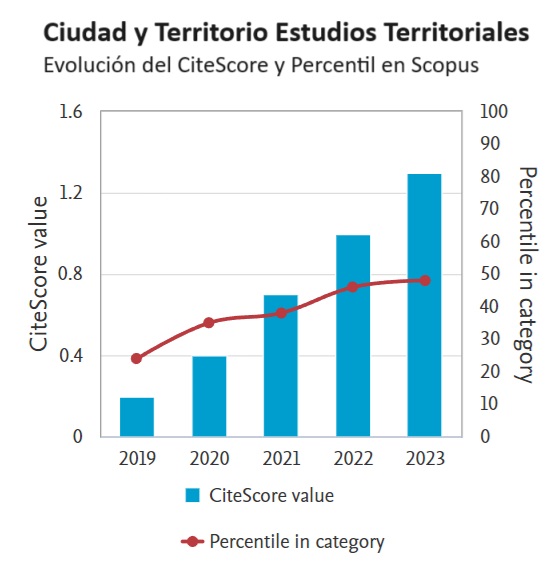The District of El Cabanyal-Canyameral of Valencia. History and future
Keywords:
Cabanyal-Canyameral, urban regeneration, Special Urban Plan of Area Renewal, urban, plunderAbstract
The history of El Cabanyal-Canyameral of Valencia and its Historical Area responds to one
of the social and urbanistic conflicts with greater media repercussion, which occurred during the
last century in Europe, especially due to the Special Urban Plan of Area Renewal (PEPRI) and the
proposal for the extension of the Avenida Blasco Ibañez. In fact, this new street was conceived as
an intervention proposal of a grand boulevard and a structuring axis which involved extensive
demolitions, approximately 217 buildings in the version of 2001 and 196 in that of 2014, in an area
with a high level of heritage protection. The article incorporates a historical analysis of El Cabanyal,
which explains the main episodes that have affected, in one way or another, the urbanistic growth
of the district and its current urban morphology. Since the continual and systematic fires which
occurred in this area, the incidence of the extension work on the port of Valencia and its effect on
the coast line or the presence of the railway lines and their conditioning on the development of the
district. Moreover, the study also starts from the important role, which Judges and Courts have had
in drafting a solvent case law which has been extrapolated to the National Superior Court and to
the other Superior Courts of the Autonomous Communities. This is why the article also focuses on
the judicial pronouncements which have affected the the Special Urban Plan of Area Renewal, from
the decisions which have quadrupled the value of the expropriations to the recognition of the
plundering of the historical artistic heritage, under the full conviction that Urbanism is also created
by judicial decisions. Finally, the text analyses the new scenario produced in El Cabanyal after the
derogation of the PEPRI (Special Urban Plan of Area Renewal), from the new measures of urbanistic,
architectonic and social nature, without ignoring the imprecisions and distrust which irremediably
accompany so many years of paralysation.
Downloads
Downloads
Published
How to Cite
Issue
Section
License
Copyright (c) 2017 Jorge Hervás Más

This work is licensed under a Creative Commons Attribution-NonCommercial-NoDerivatives 4.0 International License.
Considering the provisions of the current legislation on Intellectual Property, and in accordance with them, all authors publishing in CyTET give -in a non-exclusive way and without time limit- to the Ministry of Transport, Mobility and Urban Agenda the rights to disseminate, reproduce, communicate and distribute in any current or future format, on paper or electronic, the original or derived version of their work under a Creative Commons Attribution-NonCommercial-NoDerivative 4.0 license International (CC BY-NC-ND 4.0), as well as to include or assign to third parties the inclusion of its content in national and international indexes, repositories and databases, with reference and recognition in any case of its authorship.
In addition, when sending the work, the author(s) declares that it is an original work in which the sources that have been used are recognized, committing to respect the scientific evidence, to no longer modify the original data and to verify or refute its hypothesis. Author(s) also declare that the essential content of the work has not been previously published nor will it be published in any other publication while it is under evaluation by CyTET; and that it has not been simultaneously sent to another journal.
Authors must sign a Transfer of Rights Form, which will be sent to them from the CyTET Secretariat once the article is accepted for publication.
With the aim of promoting the dissemination of knowledge, CyTET joins the Open Journal Access (OA) movement and delivers all of its content to various national and international indexes, repositories and databases under this protocol; therefore, the submission of a work to be published in the journal presupposes the explicit acceptance by the author of this distribution method.
Authors are encouraged to reproduce and host their work published in CyTET in institutional repositories, web pages, etc. with the intention of contributing to the improvement of the transfer of knowledge and the citation of said works.








 Enlace a CyTET en Linkedin
Enlace a CyTET en Linkedin